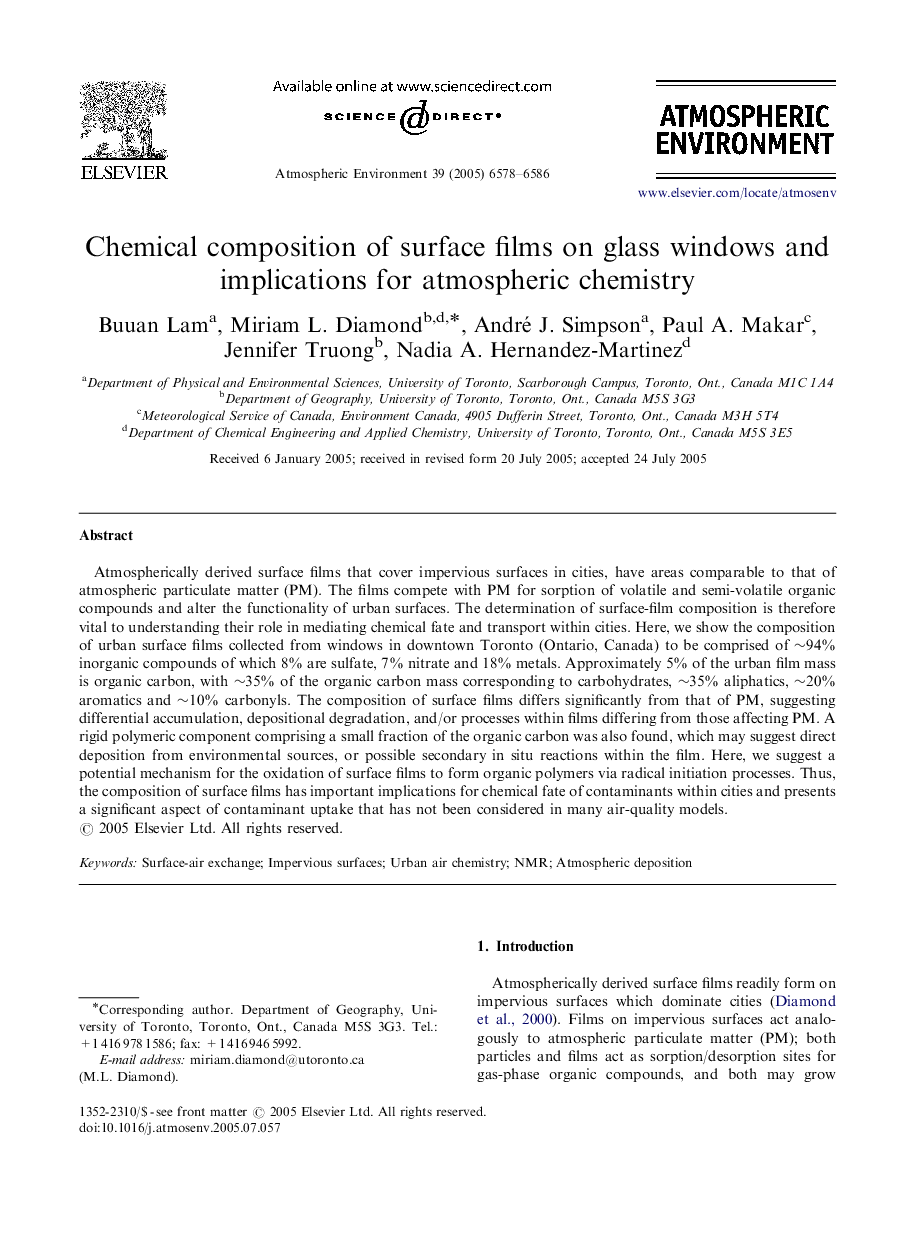| Article ID | Journal | Published Year | Pages | File Type |
|---|---|---|---|---|
| 4445337 | Atmospheric Environment | 2005 | 9 Pages |
Atmospherically derived surface films that cover impervious surfaces in cities, have areas comparable to that of atmospheric particulate matter (PM). The films compete with PM for sorption of volatile and semi-volatile organic compounds and alter the functionality of urban surfaces. The determination of surface-film composition is therefore vital to understanding their role in mediating chemical fate and transport within cities. Here, we show the composition of urban surface films collected from windows in downtown Toronto (Ontario, Canada) to be comprised of ∼94% inorganic compounds of which 8% are sulfate, 7% nitrate and 18% metals. Approximately 5% of the urban film mass is organic carbon, with ∼35% of the organic carbon mass corresponding to carbohydrates, ∼35% aliphatics, ∼20% aromatics and ∼10% carbonyls. The composition of surface films differs significantly from that of PM, suggesting differential accumulation, depositional degradation, and/or processes within films differing from those affecting PM. A rigid polymeric component comprising a small fraction of the organic carbon was also found, which may suggest direct deposition from environmental sources, or possible secondary in situ reactions within the film. Here, we suggest a potential mechanism for the oxidation of surface films to form organic polymers via radical initiation processes. Thus, the composition of surface films has important implications for chemical fate of contaminants within cities and presents a significant aspect of contaminant uptake that has not been considered in many air-quality models.
